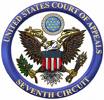Mitten on International Sports Arbitration
 Matt Mitten has a new article on SSRN, Judicial Review of Olympic and International Sports Arbitration Awards: Trends and Observations. The article focuses on the review of decisions by the Court of Arbitration for Sport, of which Matt is a member. Here is the abstract:
Matt Mitten has a new article on SSRN, Judicial Review of Olympic and International Sports Arbitration Awards: Trends and Observations. The article focuses on the review of decisions by the Court of Arbitration for Sport, of which Matt is a member. Here is the abstract:
This article provides an overview of the nature and scope of judicial review of Olympic and international sports arbitration awards, primarily those rendered by the Court of Arbitration for Sport (based in Lausanne, Switzerland) and their review by the Swiss Federal Tribunal pursuant to the Swiss Federal Code on Private International Law. It also describes and compares U.S. courts’ review of international sports arbitration awards pursuant to the United Nations Convention on the Recognition and Enforcement of Foreign Arbitral Awards as well as domestic sports arbitration awards. Both Swiss and U.S. courts are permitting CAS arbitration awards to establish a developing body of private international sports law that displaces national laws. The author concludes that this is the appropriate jurisprudential view because it is necessary to have universally accepted legal rules and dispute resolution processes for Olympic and international athletic competition, and for the governance of global sports competition to be fair and equitable on a worldwide basis.
The article is forthcoming in the Pepperdine Dispute Resolution Journal.


